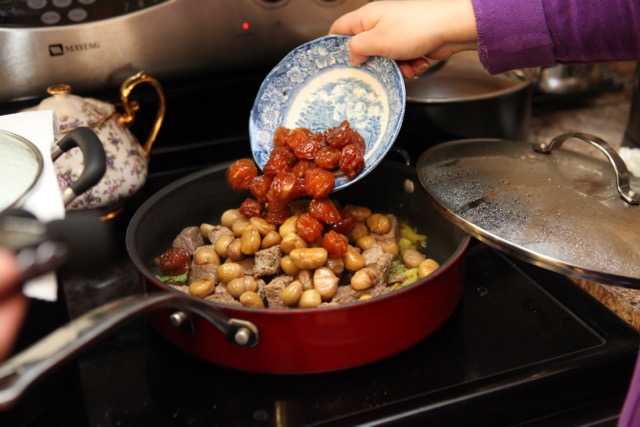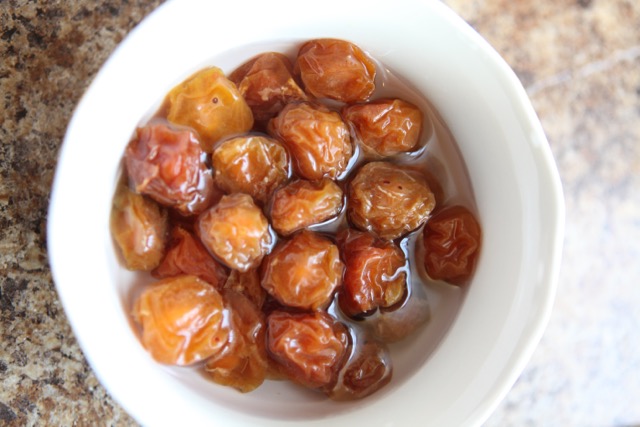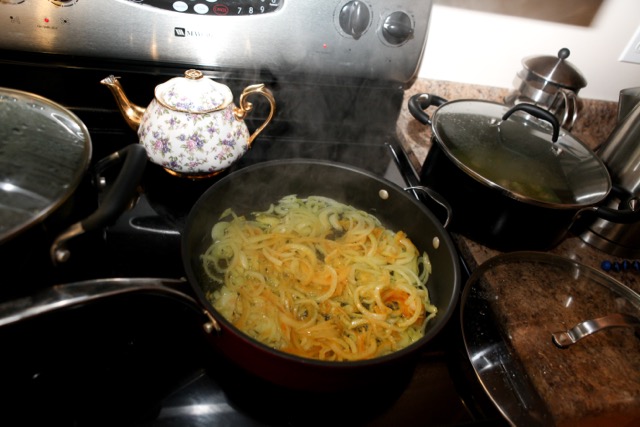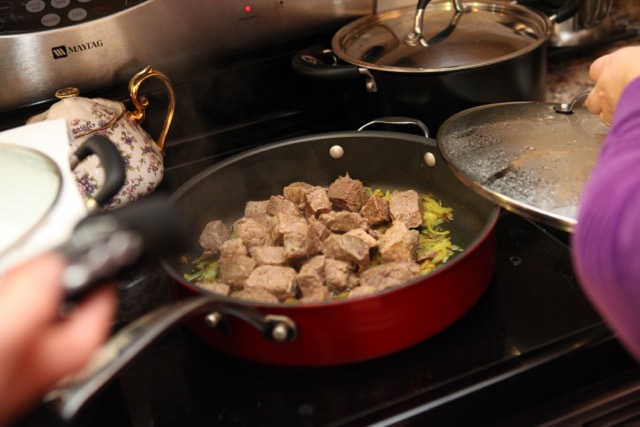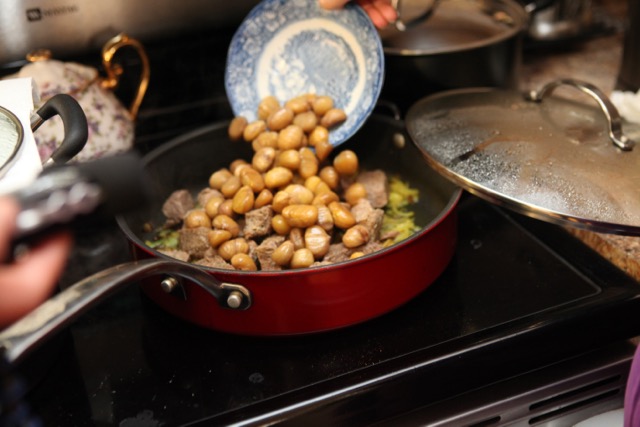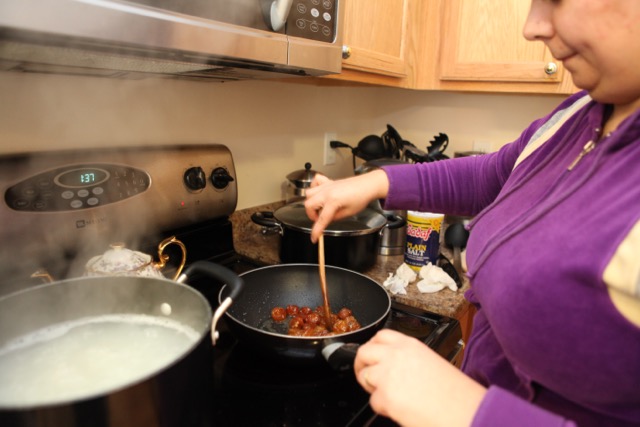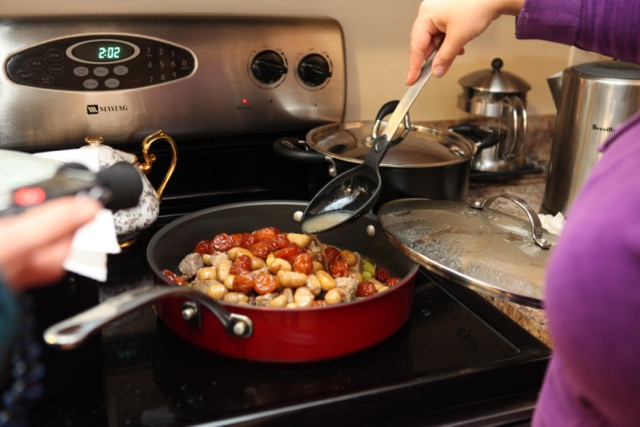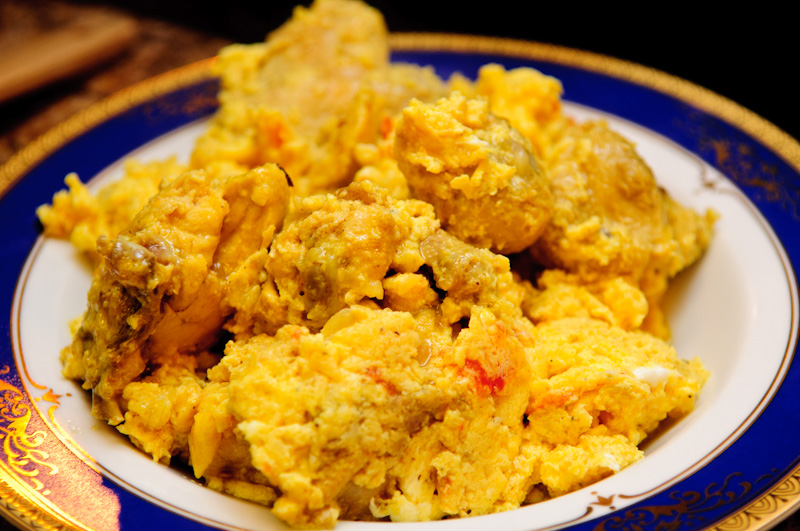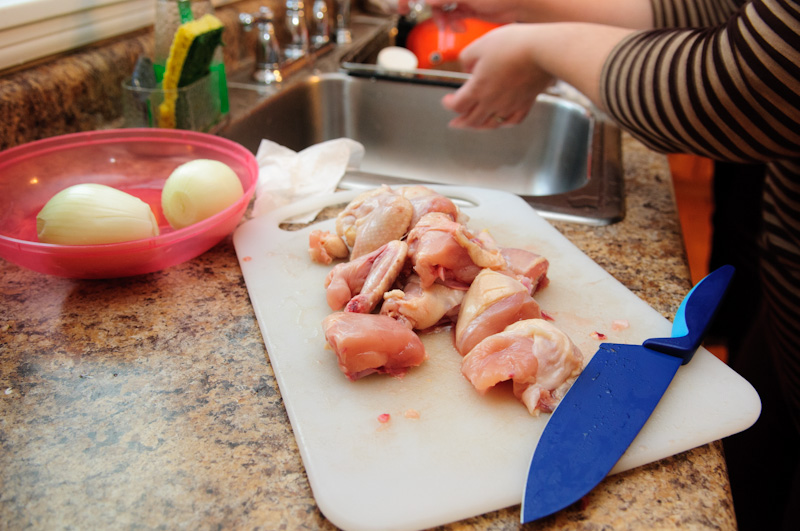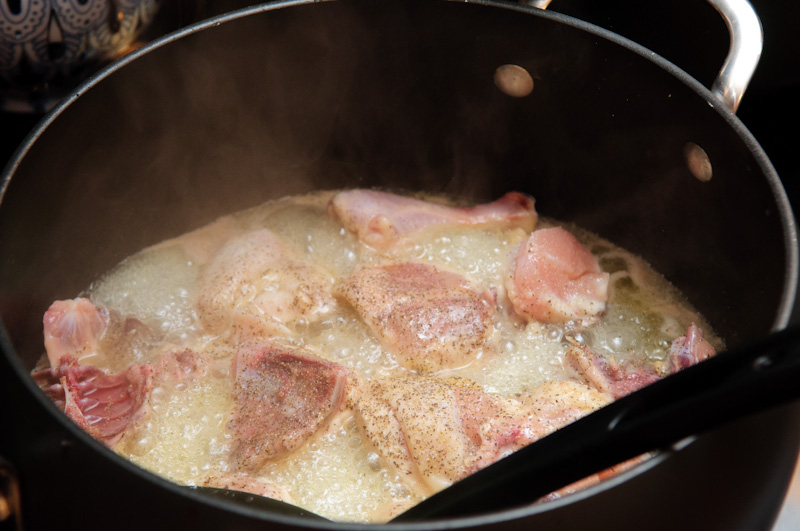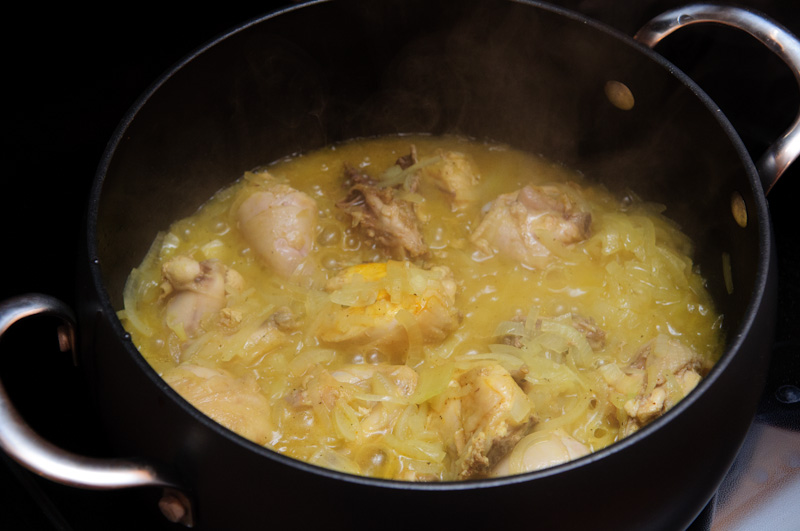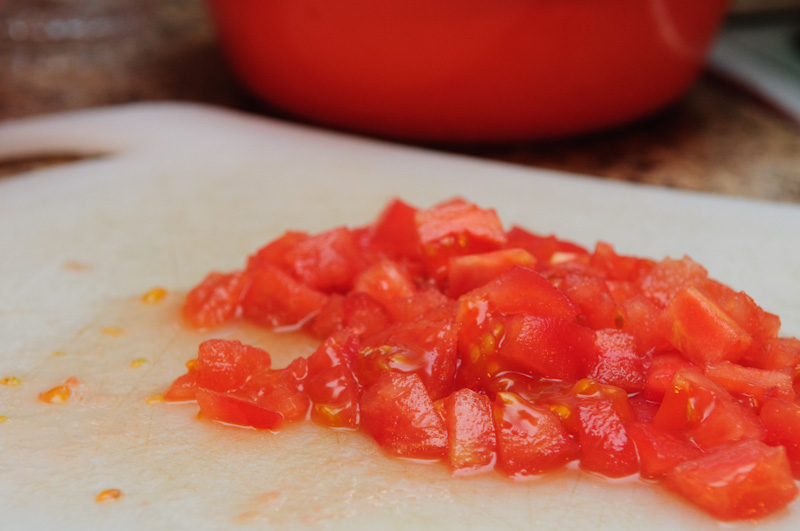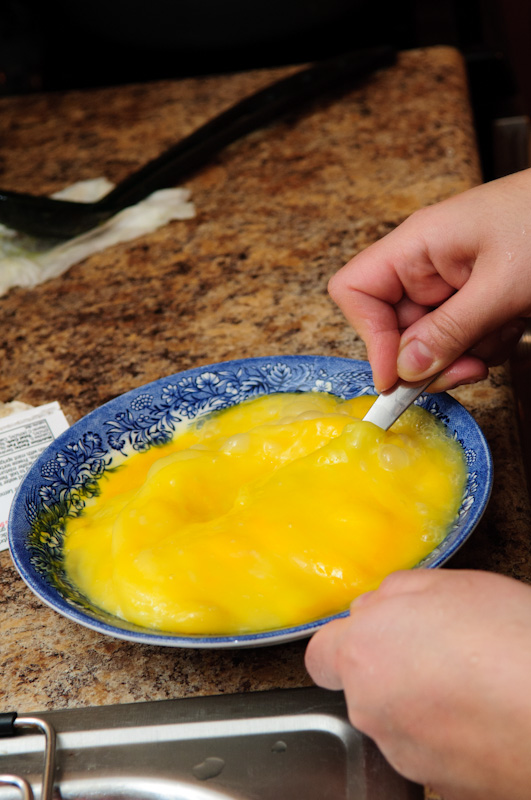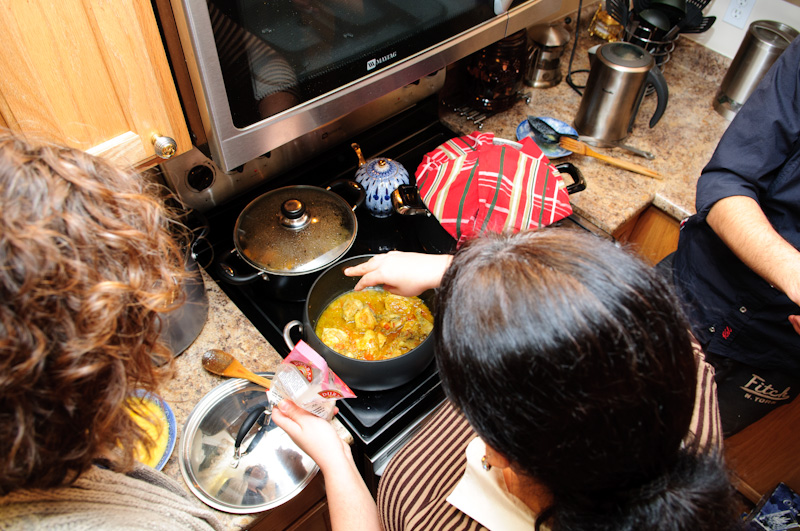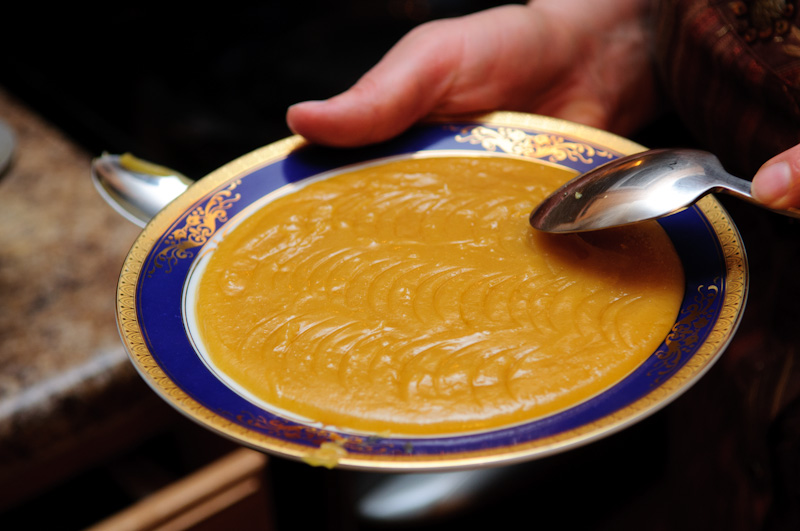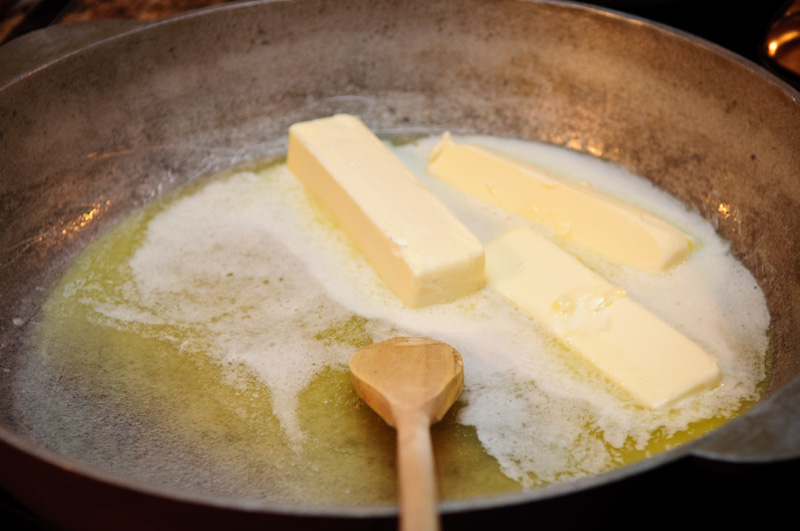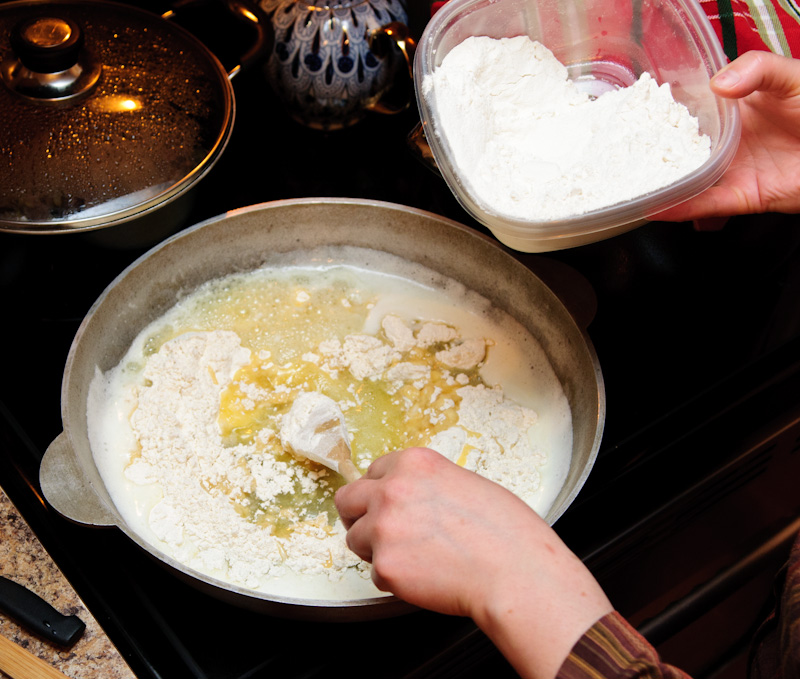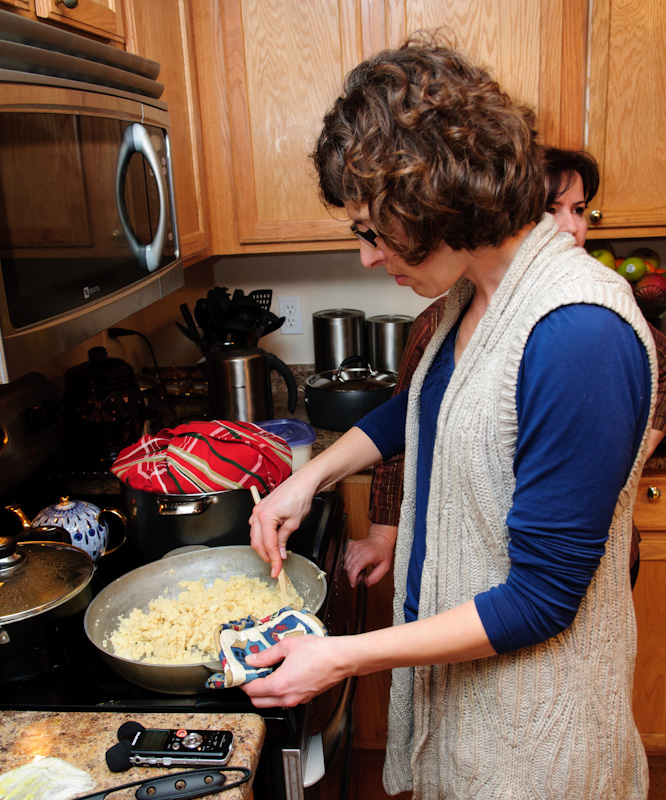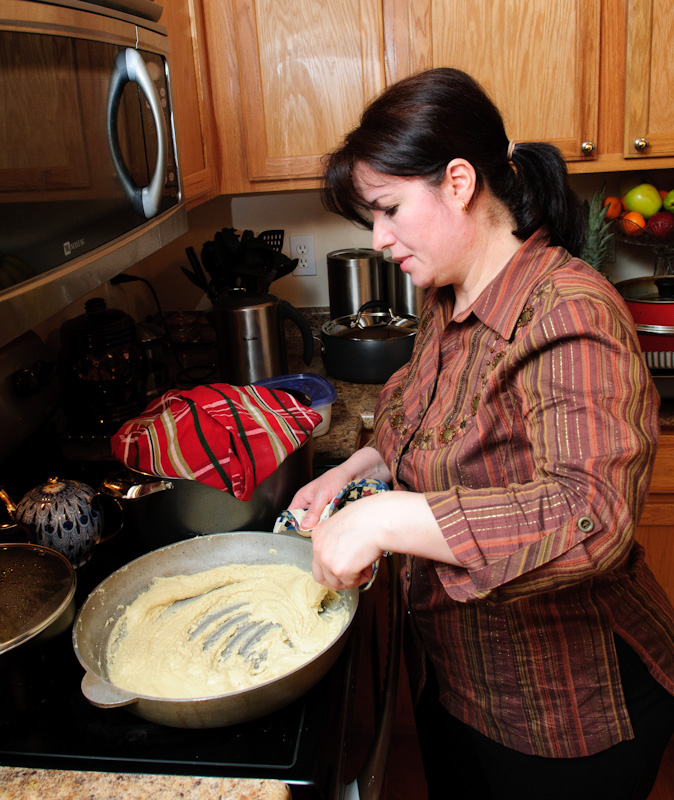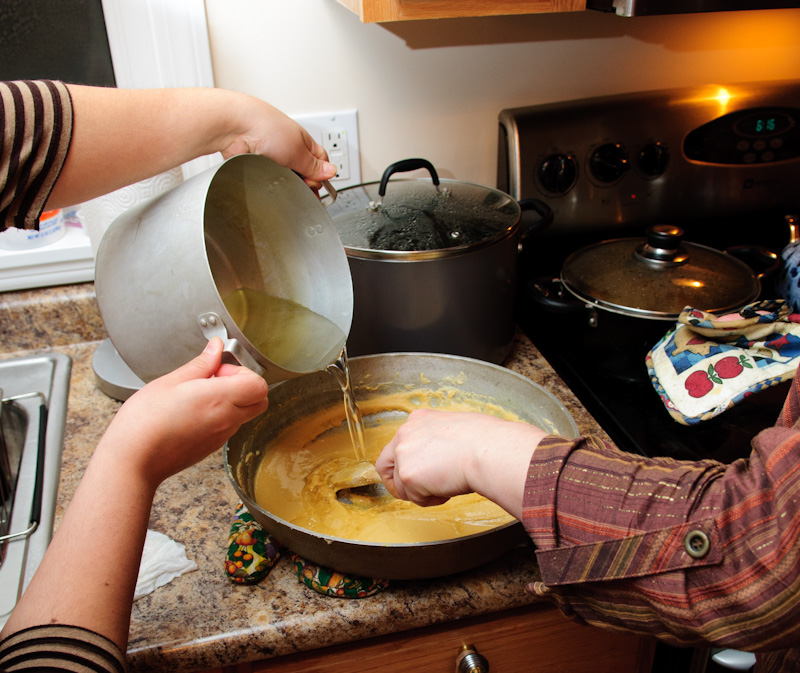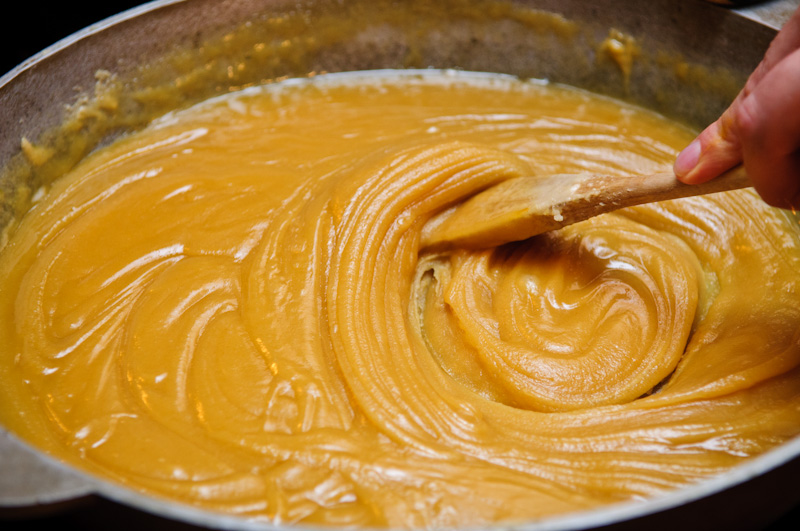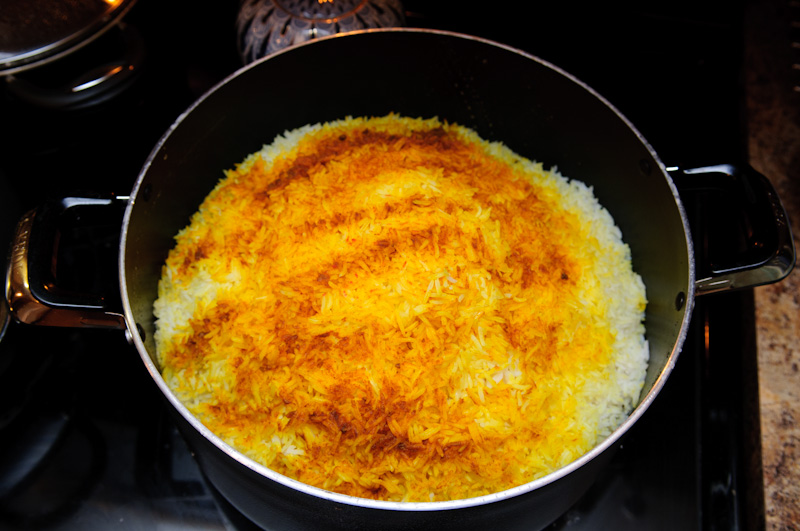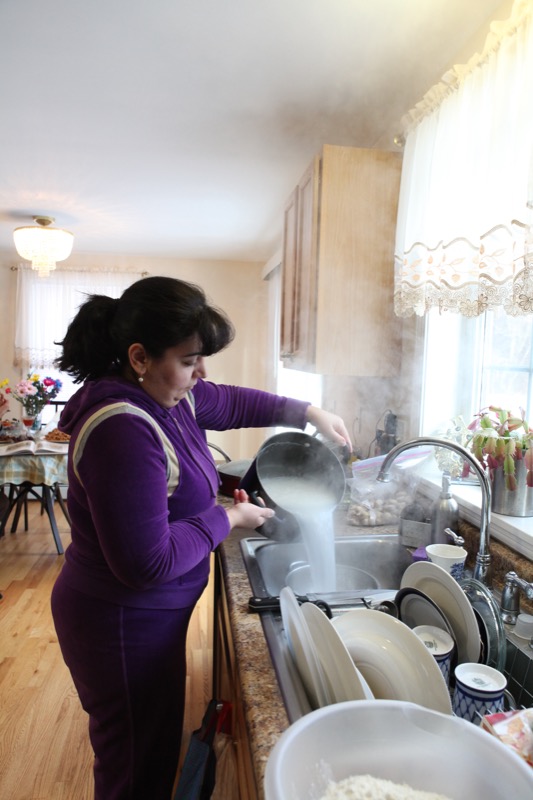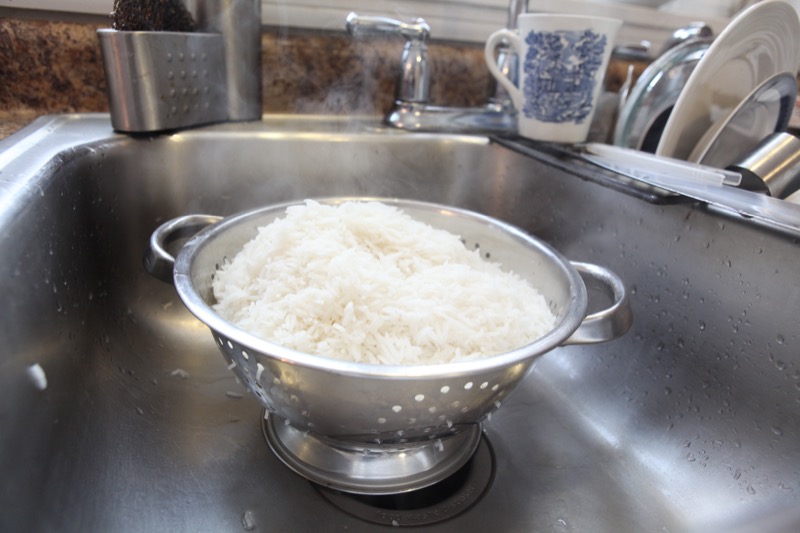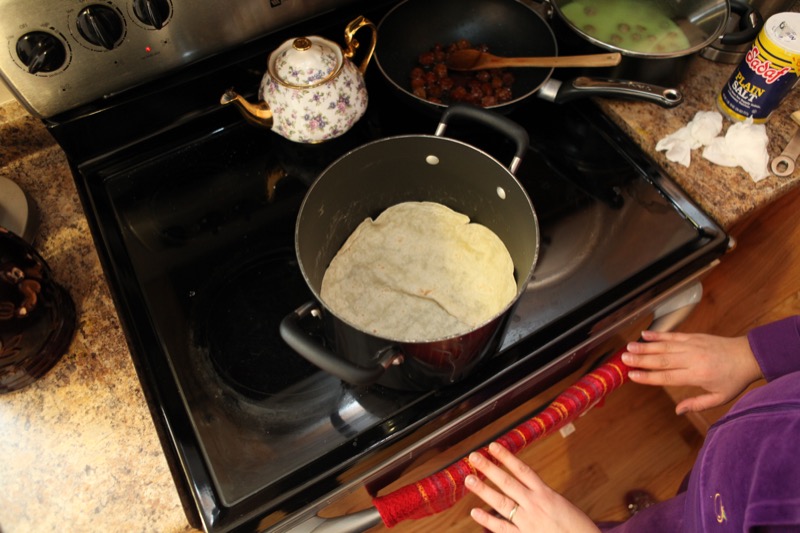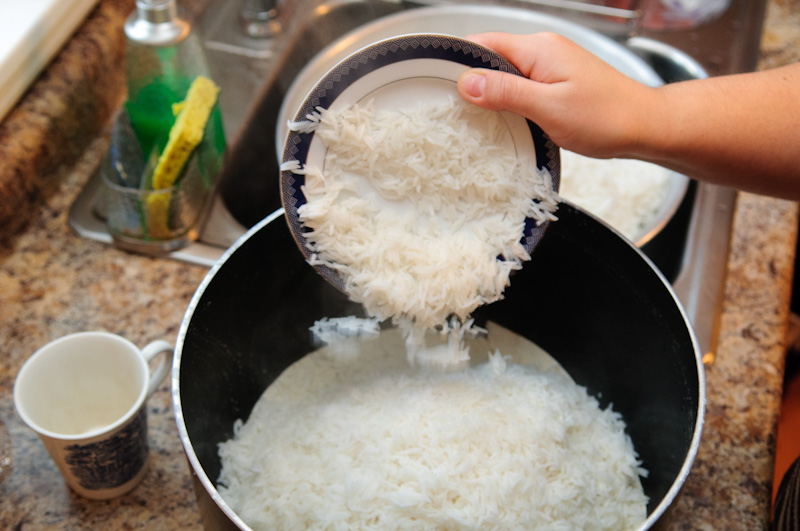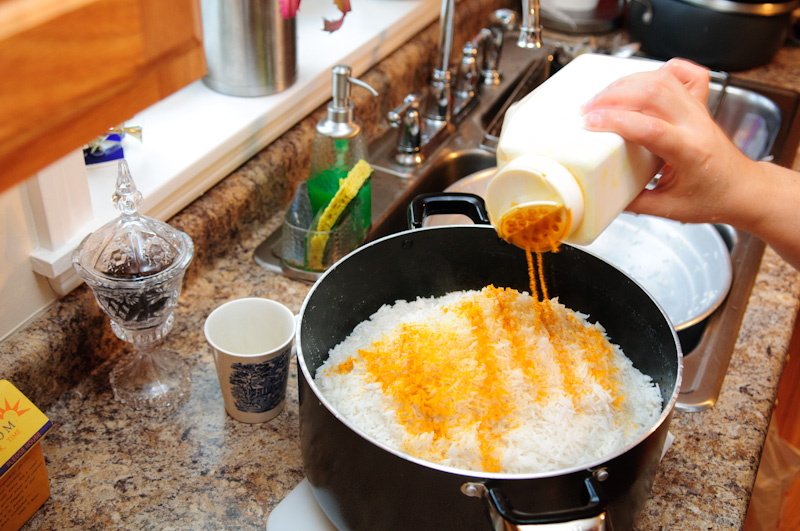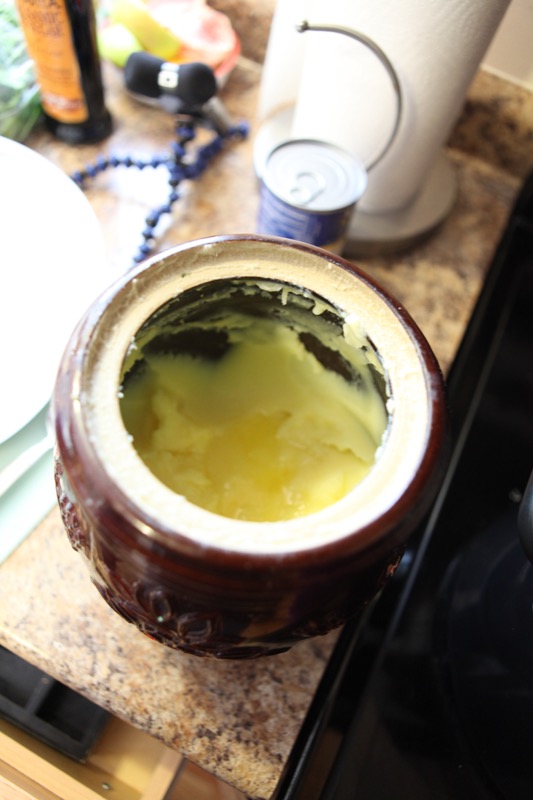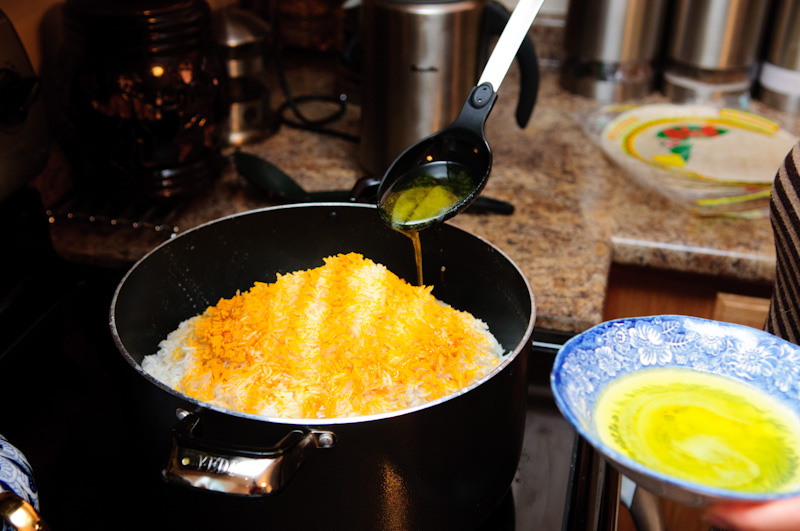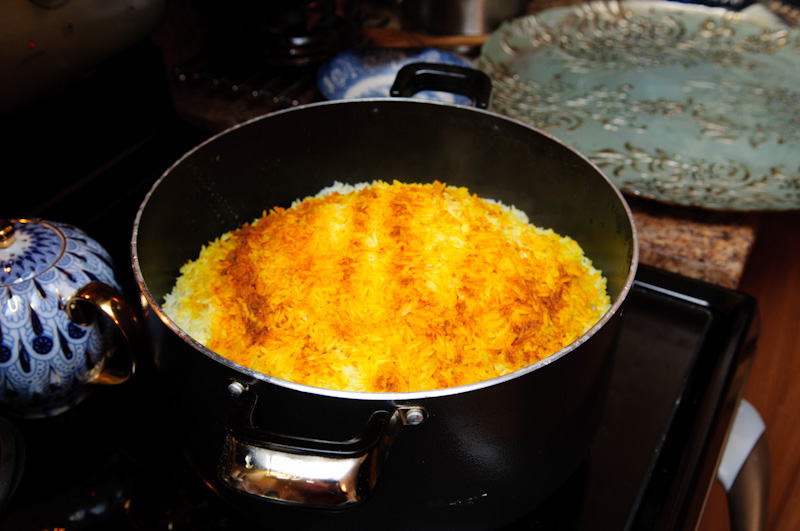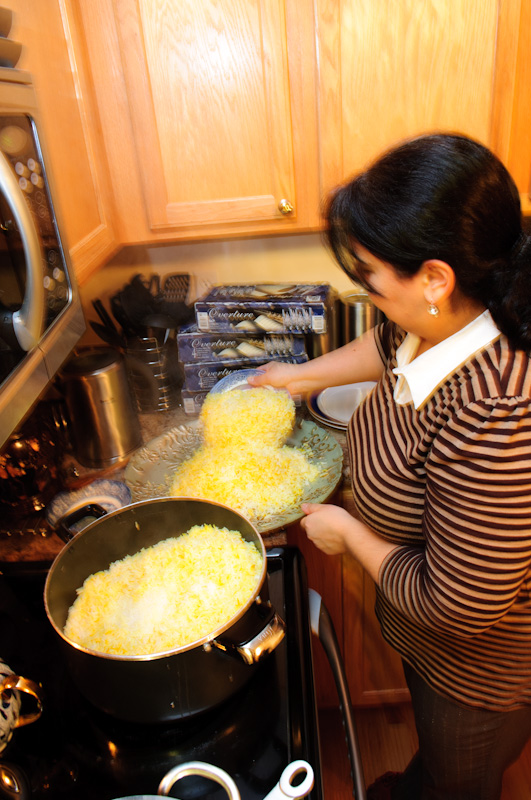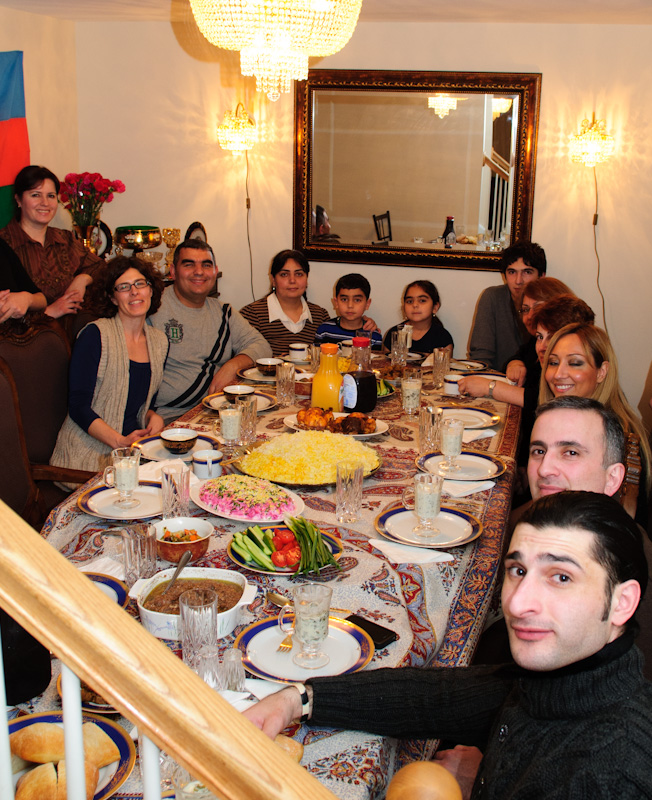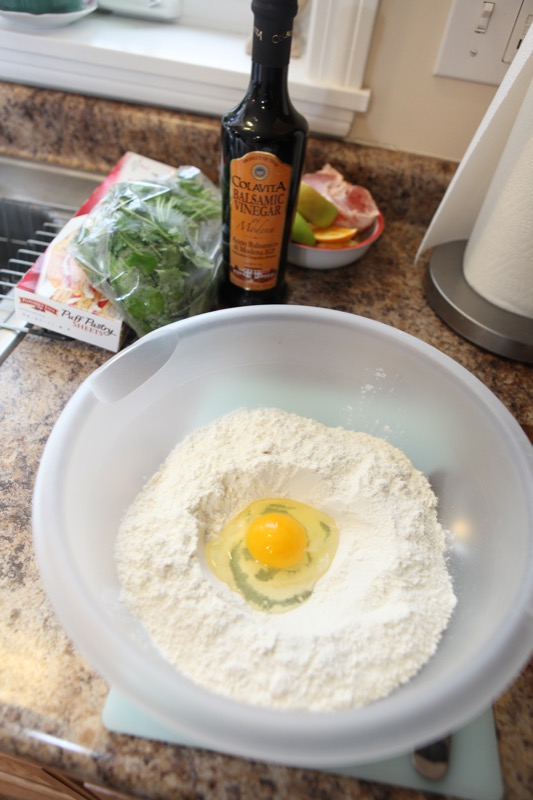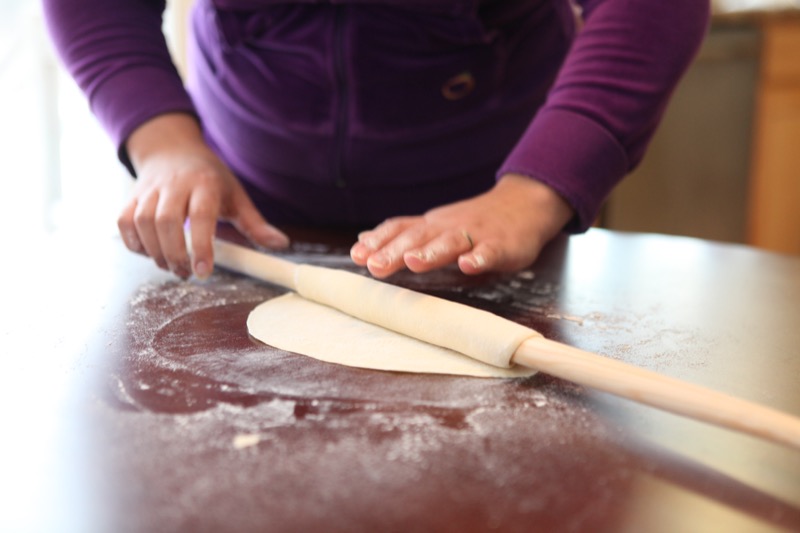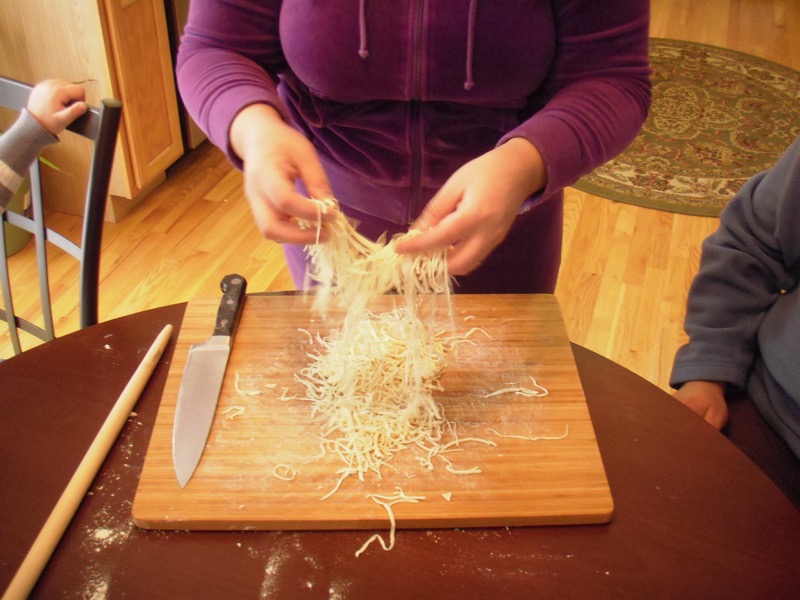Khamrashy
As Zemfira and Tarlan Ahmadov from Baku, Azerbaijan, showed Lindsay Sterling in Portland, Maine.
Serves: 10 as a first course
Cooking Time: 2 hours
Perfect with: Azerbaijani beef with chestnuts, yellow rice, fresh vegetable platter, and a small bowl of pickled vegetables
Ingredients
- 1 pound ground lamb (preferably not super lean)
- 1/2 tsp salt + more to taste
- 1/2 onion
- 3 cups flour
- 1 egg
- water
- dash turmeric
- 1 1/2 cups cooked black eyed peas or kidney beans (if using canned, use 1 can strained and rinsed)
- dried mint
- 1/4 cup balsamic vinegar
Instructions
1. Make lamb meatballs. Fine dice half an onion, mix into ground lamb with a little salt, and form meatballs that are about the diameter of a quarter. Simmer the meatballs gently in water (which becomes the broth of your soup) for forty minutes, discarding foam or oils that rise to the top with a spoon.
2. Make fresh pasta by hand. It's easy once you know how to do it. In a large mixing bowl make a well in 3 cups flour and fill it with one egg. Mix the egg with your pointer finger around and around faster than meets the eye. Then once the egg is mixed start widening the circle you're drawing with your finger to incorporate flour from the edges of the well. As you do this, pour water slowly from a cup into the egg mixture, allowing you to continue mixing your wet whirl into the dry flour around it until you have a dry dough that is soft and pliable. Continue folding the dough on top of itself so that it's uniform.
3. Split the dough into three equal sized balls. Make them nice and round by pulling the edges of each ball and pressing them into the bottom of it. Let the three balls rest in the center of the flour bowl, covered with a cloth for twenty minutes.
4. On a clear table or counter top, pat one of the balls of dough into a circle. Then roll it out with a rolling pin into a large thin sheet. You'll need to sprinkle flour liberally on the dough as you are rolling it out. Also, intermittently lift the sheet off the counter and flour the other side.
5. Once you have a nice big thin sheet about the thickness of a piece of construction paper, fold the outside edges of the sheet into the middle, and then fold the shape in half making the crease where the edges are. Now you have a really long rectangle. Shorten the rectangle by folding it in half again.
6. Cut across this packet into thin strips with a chef knife, making fresh pasta. To help cut parrallel lines (making noodles with even width) use the hand not holding the knife as a guide. What I mean is: stick the elbow of the hand not holding the knife out in front of you. Then put that hand along the short length of the dough to visually guide the parallel line where to cut across the dough.
7. Once you've cut the noodles, toss the noodles so they're dusted in flour and stay separate from each other. Repeat with the other two dough balls.
8. Turn the soup to medium high. When it's simmering, add black eyed peas, a dash of turmeric, and a couple handfuls of fresh pasta. Reserve the rest of the pasta, covered in the fridge, for any fresh pasta dish you like tomorrow.
9. When pasta's done and the soup has slightly thickened from the pasta starch, it's done. Sprinkle each bowl with dried mint. Serve with small vessel of balsamic for people to drizzle on top.
RECIPE FEEDBACK
Please help improve this recipe for others by sharing your suggestions in the comment box below.



